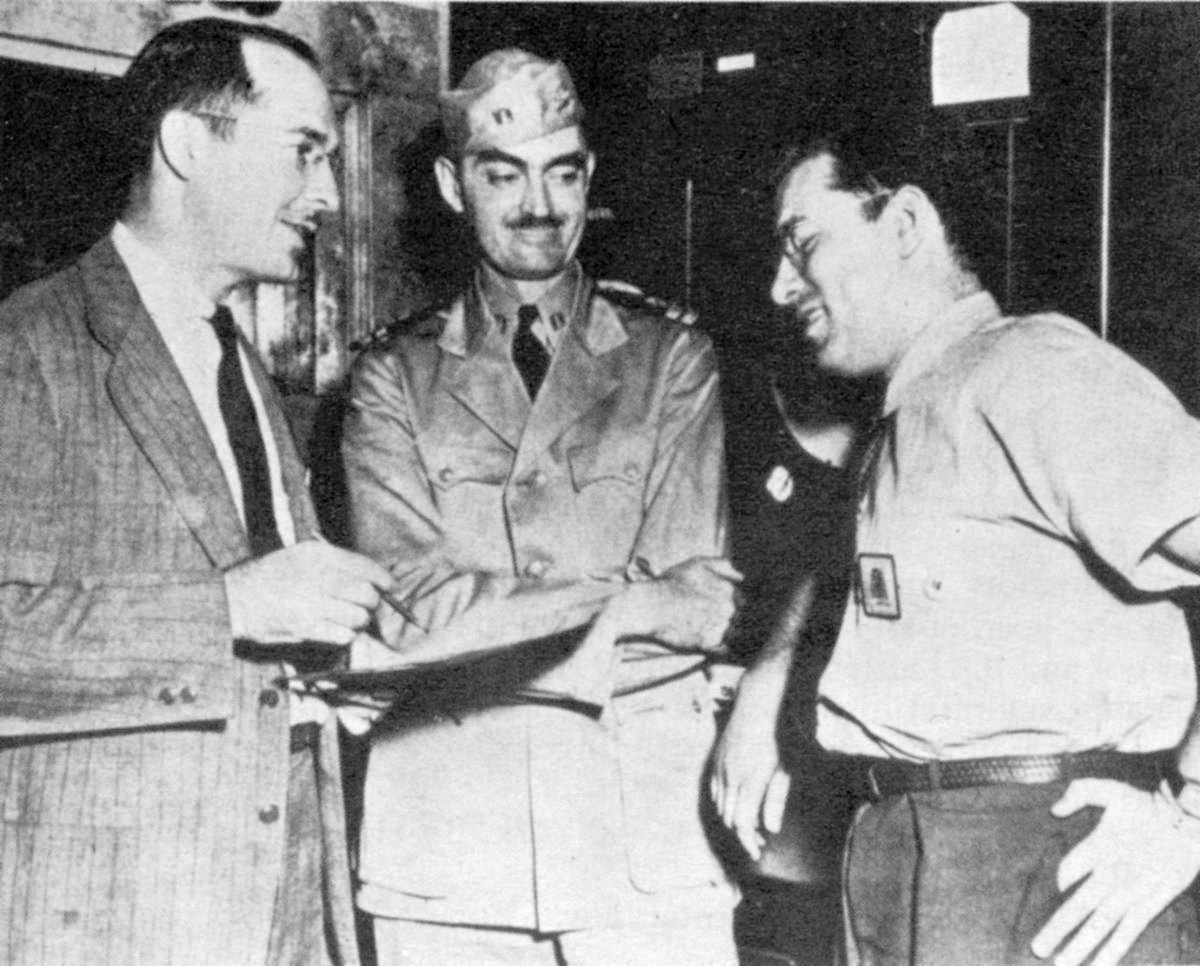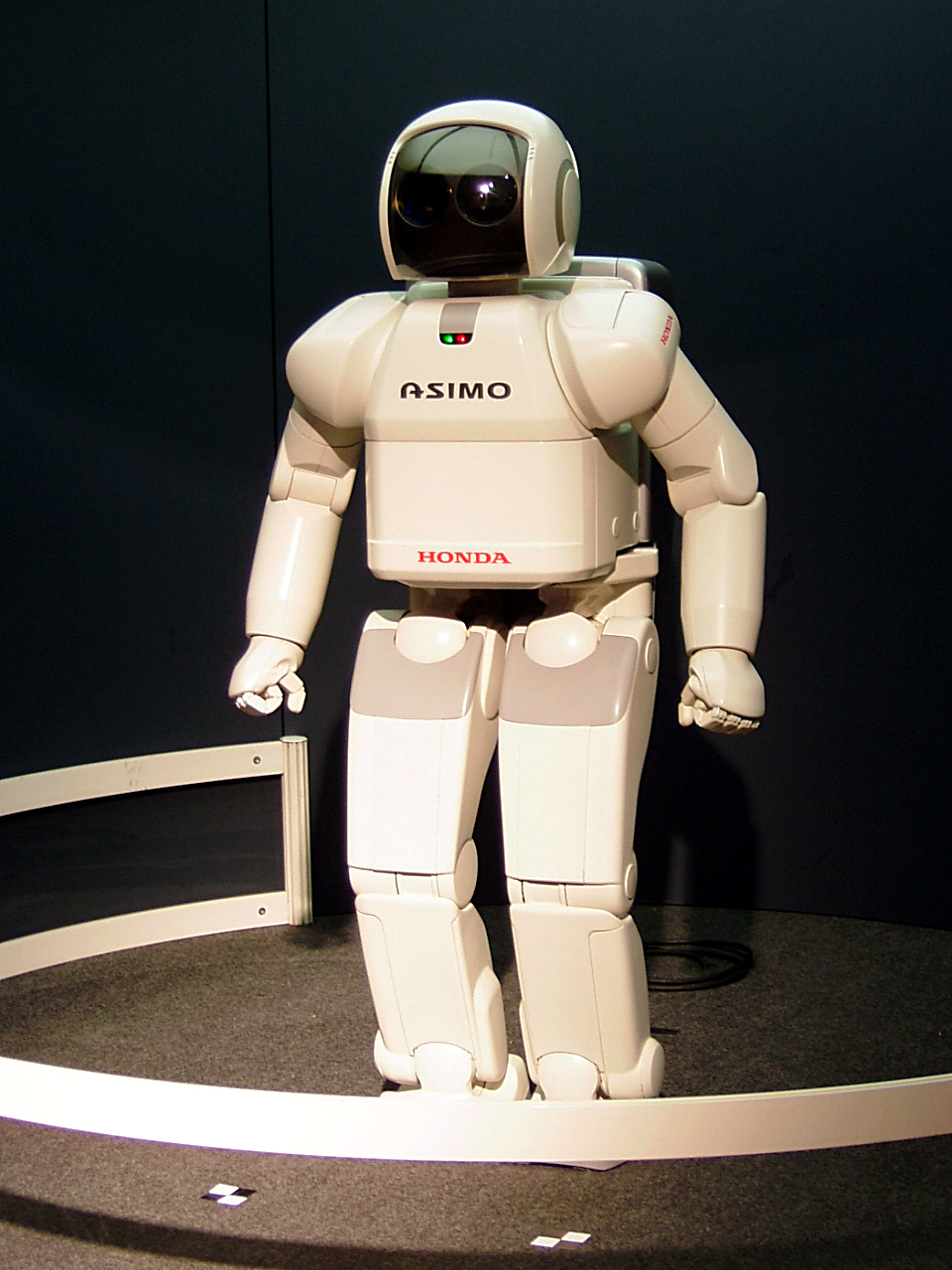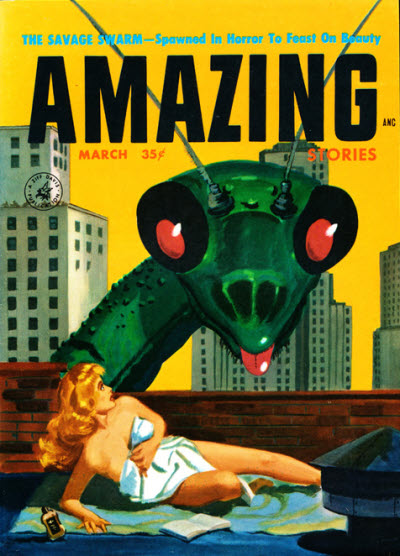|
Lenny (short Story)
"Lenny" is a science fiction short story by American writer Isaac Asimov, originally published in the January 1958 issue of ''Infinity Science Fiction'', and included in the collections ''The Rest of the Robots'' (1964), ''The Complete Robot'' (1982), and ''Robot Visions'' (1990). As in many of Asimov's robot stories, prejudice is an important theme in "Lenny". Plot summary U.S. Robots is planning the production of the LNE series of robots, which are designed for boron mining in the asteroid belt. After a technician neglects to lock a terminal, a factory tourist accidentally reprograms the prototype LNE, wiping clean the structure of the robot's brain, and rendering it a baby in all effects. Robopsychologist Susan Calvin experiments with it, in the process naming it "Lenny" (and developing maternal feelings for it), and after a month, has been able to teach it a few simple words and actions. She gets emotionally attached to Lenny and realizes that robots can be built that are ... [...More Info...] [...Related Items...] OR: [Wikipedia] [Google] [Baidu] |
Isaac Asimov
Isaac Asimov ( ; – April 6, 1992) was an Russian-born American writer and professor of biochemistry at Boston University. During his lifetime, Asimov was considered one of the "Big Three" science fiction writers, along with Robert A. Heinlein and Arthur C. Clarke. A prolific writer, he wrote or edited more than 500 books. He also wrote an estimated 90,000 letters and postcards. Best known for his hard science fiction, Asimov also wrote mystery fiction, mysteries and fantasy, as well as popular science and other non-fiction. Asimov's most famous work is the ''Foundation (book series), Foundation'' series, the first three books of which won the one-time Hugo Award for "Best All-Time Series" in 1966. His other major series are the ''Galactic Empire series, Galactic Empire'' series and the ''Robot series, Robot'' series. The ''Galactic Empire'' novels are set in the much earlier history of the same fictional universe as the ''Foundation'' series. Later, with ''Foundation an ... [...More Info...] [...Related Items...] OR: [Wikipedia] [Google] [Baidu] |
Boron
Boron is a chemical element; it has symbol B and atomic number 5. In its crystalline form it is a brittle, dark, lustrous metalloid; in its amorphous form it is a brown powder. As the lightest element of the boron group it has three valence electrons for forming covalent bonds, resulting in many compounds such as boric acid, the mineral sodium borate, and the ultra-hard crystals of boron carbide and boron nitride. Boron is synthesized entirely by cosmic ray spallation and supernovas and not by stellar nucleosynthesis, so it is a low-abundance element in the Solar System and in the Earth's crust. It constitutes about 0.001 percent by weight of Earth's crust. It is concentrated on Earth by the water-solubility of its more common naturally occurring compounds, the borate minerals. These are mined industrially as evaporites, such as borax and kernite. The largest known deposits are in Turkey, the largest producer of boron minerals. Elemental boron is found in smal ... [...More Info...] [...Related Items...] OR: [Wikipedia] [Google] [Baidu] |
Robot Series Short Stories By Isaac Asimov
A robot is a machine—especially one programmable by a computer—capable of carrying out a complex series of actions automatically. A robot can be guided by an external control device, or the control may be embedded within. Robots may be constructed to evoke human form, but most robots are task-performing machines, designed with an emphasis on stark functionality, rather than expressive aesthetics. Robots can be autonomous or semi-autonomous and range from humanoids such as Honda's ''Advanced Step in Innovative Mobility'' (ASIMO) and TOSY's ''TOSY Ping Pong Playing Robot'' (TOPIO) to industrial robots, medical operating robots, patient assist robots, dog therapy robots, collectively programmed ''swarm'' robots, UAV drones such as General Atomics MQ-1 Predator, and even microscopic nanorobots. By mimicking a lifelike appearance or automating movements, a robot may convey a sense of intelligence or thought of its own. Autonomous things are expected to proliferate in ... [...More Info...] [...Related Items...] OR: [Wikipedia] [Google] [Baidu] |
Foundation (book Series)
The ''Foundation'' series is a science fiction novel series written by American author Isaac Asimov. First published as a series of short stories and novellas in 1942–1950, and subsequently in three novels in 1951–1953, for nearly thirty years the series was widely known as ''The Foundation Trilogy'': '' Foundation'' (1951), ''Foundation and Empire'' (1952), and '' Second Foundation'' (1953). It won the one-time Hugo Award for "Best All-Time Series" in 1966. Asimov later added new volumes, with two sequels, '' Foundation's Edge'' (1982) and '' Foundation and Earth'' (1986), and two prequels, '' Prelude to Foundation'' (1988) and ''Forward the Foundation'' (1993). The premise of the stories is that in the waning days of a future Galactic Empire, the mathematician Hari Seldon devises the theory of psychohistory, a new and effective mathematics of sociology. Using statistical laws of mass action, it can predict the future of large populations. Seldon foresees the imminent f ... [...More Info...] [...Related Items...] OR: [Wikipedia] [Google] [Baidu] |
Evidence (short Story)
"Evidence" is a science fiction short story by American writer Isaac Asimov. It was first published in the September 1946 issue of ''Astounding Science Fiction'' and reprinted in the collections '' I, Robot'' (1950), ''The Complete Robot'' (1982), and ''Robot Visions'' (1990). Background "Evidence" was the only story Isaac Asimov wrote while in the United States Army from November 1945 to July 1946. He began the story at Camp Lee in January, finished it in April in Honolulu while waiting to go to Operation Crossroads, and sold it to editor John W. Campbell that month. Orson Welles purchased film rights for "Evidence" for $250. Asimov thought that he would become famous from a movie based on the story, but Welles never used the script. His wife, Gertrude Blugerman, advised him to hold out for more money, but neither of them considered option payments which could be renewed every several years, allowing the movie rights to relapse if Welles took no action. Plot summary Stephen ... [...More Info...] [...Related Items...] OR: [Wikipedia] [Google] [Baidu] |
I, Robot
''I, Robot'' is a fixup collection of science fiction short stories by American writer Isaac Asimov. The stories originally appeared in the American magazines '' Super Science Stories'' and ''Astounding Science Fiction'' between 1940 and 1950. The stories were then compiled into a single publication by Gnome Press in 1950, in an initial edition of 5,000 copies. All the short stories in this collection, minus the frame story, were later included in The Complete Robot (1982). Overview The stories are woven together by a framing narrative in which the fictional Dr. Susan Calvin tells each story to a reporter (who serves as the narrator) in the 21st century. Although the stories can be read separately, they share a theme of the interaction of humans, robots, and morality, and when combined they tell a larger story of Asimov's fictional history of robotics. Several of the stories feature the character of Dr. Calvin, chief robopsychologist at U.S. Robots and Mechanical Men, ... [...More Info...] [...Related Items...] OR: [Wikipedia] [Google] [Baidu] |
Harlan Ellison
Harlan Jay Ellison (May 27, 1934 – June 28, 2018) was an American writer, known for his prolific and influential work in New Wave science fiction, New Wave speculative fiction and for his outspoken, combative personality. His published works include more than 1,700 short stories, novellas, screenplays, comic-book scripts, teleplays, essays, and a wide range of criticism covering literature, film, television, and print media. Some of his best-known works include the 1967 ''Star Trek: The Original Series, Star Trek'' episode "The City on the Edge of Forever", considered by some to be the single greatest episode of the ''Star Trek'' franchise (he subsequently wrote a book about the experience that includes his original teleplay), his ''A Boy and His Dog'' cycle (which was made into A Boy and His Dog (1975 film), a film), and his short stories "I Have No Mouth, and I Must Scream" (later adapted by Ellison into I Have No Mouth, and I Must Scream (video game), a video game) and ... [...More Info...] [...Related Items...] OR: [Wikipedia] [Google] [Baidu] |
Susan Calvin
Dr. Susan Calvin is a fictional character appearing in Isaac Asimov's ''Robot'' series of science fiction short stories. According to '' I, Robot'', Susan Calvin was born in the year 1982 and died at the age of 82, either in 2064 or 2065. She was the chief robopsychologist at US Robots and Mechanical Men, Inc., posited as the major manufacturer of robots in the 21st century. She was the main character in many of Asimov's short stories concerning robots, which were later collected in the books '' I, Robot'' and '' The Complete Robot''. Fictional character biography According to Asimov's fictional history of robotics, Susan Calvin was born in 1982, the same year that US Robots and Mechanical Men was incorporated. At 16, she wrote the first of many papers on robotics, a Physics-1 paper entitled "Practical Aspects of Robotics". This was after attending a Psycho-Math seminar at which Dr Alfred Lanning of US Robots demonstrated the first mobile robot to be equipped with a voice. A ... [...More Info...] [...Related Items...] OR: [Wikipedia] [Google] [Baidu] |
Factory Tour
A factory tour is an organized visit to a factory to observe the products being manufactured and the processes at work. Manufacturing companies offer factory tours to improve public relations. Types of factory tours Breweries and distilleries, together with manufacturers of clothes, pottery and glass, are amongst the most popular factory visits. The popularity of factory tours has declined since the mid-20th century, as factories no longer represent the cutting edge of technology. Government agencies such as NASA and ESA, and companies like Boeing still continue their public tours of their factories, spacecraft workshops and visitor areas, either directly or through a sponsorship company. Some countries have set up industrial-related museums where tours to see their processing is part of the museum attractions, such as the BRAND'S Health Museum, , Taiwan Metal Creation Museum, Taiwan Mochi Museum and Taiyen Tongxiao Tourism Factory in Taiwan Taiwan, officially the R ... [...More Info...] [...Related Items...] OR: [Wikipedia] [Google] [Baidu] |
Asteroid
An asteroid is a minor planet—an object larger than a meteoroid that is neither a planet nor an identified comet—that orbits within the Solar System#Inner Solar System, inner Solar System or is co-orbital with Jupiter (Trojan asteroids). Asteroids are rocky, metallic, or icy bodies with no atmosphere, and are broadly classified into C-type asteroid, C-type (carbonaceous), M-type asteroid, M-type (metallic), or S-type asteroid, S-type (silicaceous). The size and shape of asteroids vary significantly, ranging from small rubble piles under a kilometer across to Ceres (dwarf planet), Ceres, a dwarf planet almost 1000 km in diameter. A body is classified as a comet, not an asteroid, if it shows a coma (tail) when warmed by solar radiation, although recent observations suggest a continuum between these types of bodies. Of the roughly one million known asteroids, the greatest number are located between the orbits of Mars and Jupiter, approximately 2 to 4 astronomical unit, AU ... [...More Info...] [...Related Items...] OR: [Wikipedia] [Google] [Baidu] |
Robot Visions
''Robot Visions'' (1990) is a collection of science fiction short stories and factual essays by Isaac Asimov. Many of the stories are reprinted from other Asimov collections, particularly '' I, Robot'' and '' The Bicentennial Man and Other Stories''. It also includes the title story, "Robot Visions" (written specifically for this collectionAsimov, Isaac: ''Robot Visions'', p. 17. Roc, 1990.), which combines Asimov's motifs of robots and of time travel. It is the companion book to '' Robot Dreams'' (1986). Contents Introduction: The Robot Chronicles An 18-page introductory essay by Asimov, consisting of 17 pages of text and a one-page illustration by Ralph McQuarrie (these are the page counts of the hardcover edition). This essay (minus the illustration) was later reprinted in Asimov's collection ''Gold Gold is a chemical element; it has chemical symbol Au (from Latin ) and atomic number 79. In its pure form, it is a brightness, bright, slightly orange-yellow, dense, ... [...More Info...] [...Related Items...] OR: [Wikipedia] [Google] [Baidu] |
Robot Series (Asimov)
The ''Robot'' Series is a series of 37 science fiction short stories and six novels created by American writer Isaac Asimov; the books were published between 1940 and 1995. The series is set in a world where sentient positronic robots serve a number of purposes in society. To ensure their loyalty, the Three Laws of Robotics are programmed into these robots, with the intent of preventing them from ever becoming a danger to humanity. Later, Asimov would merge the ''Robot'' series with his ''Foundation'' series. Robot Novels and Stories The series started with the story "Robbie" in the September 1940 '' Super Science Stories'' (appearing under the title "Strange Playfellow", which was not Asimov's title). Although it was originally written as a stand-alone story, the following year Asimov published a series of additional robot stories, which fit into a narrative that was then put together as the book ''I, Robot''. List of works in the Robot Series, in chronological order by ... [...More Info...] [...Related Items...] OR: [Wikipedia] [Google] [Baidu] |




